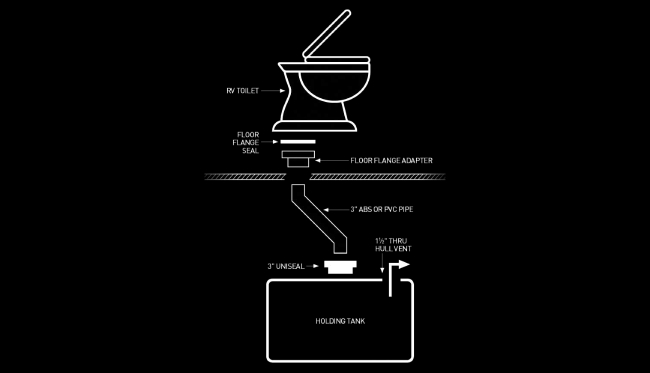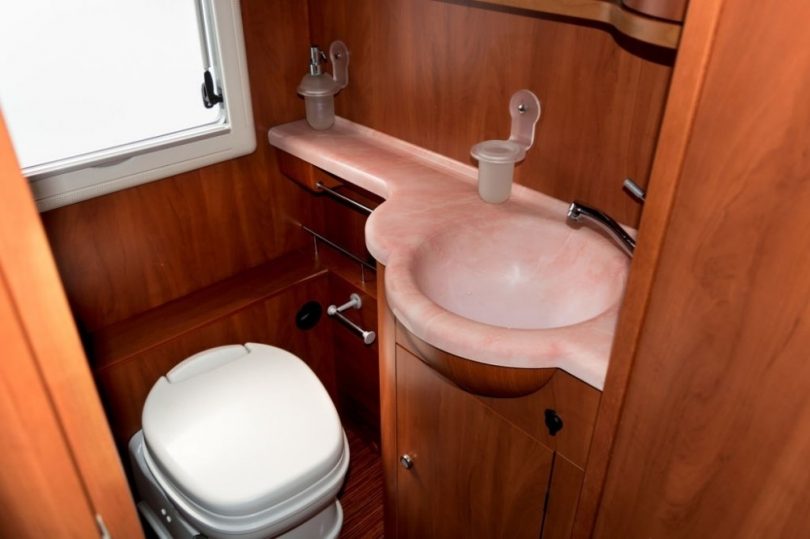Getting a mobile home may be an extended version of the domestic live for many homeowners. But it’s home to the passionate RVers and toilets are an important part of any RV setup.
If you’re a newcomer to motor homes, note that given the luxuries of your RV, there are always some big discrepancies between your RV toilet and the toilet in your home. That is because RV toilets are designed to handle waste in a simple yet efficient way while still using your RV water supply.
Getting familiar with the function ing of an RV Toilet
RV toilets nowadays have become quite similar to the standard toilets in your home. Nevertheless, there are two main distinctions between RV toilets and models inside your house.
The bathroom toilet inside the house would have a huge “water supply” reservoir next to the toilet to eliminate waste. It would also have a “trap” inside its generic structure to contain water inside its foundation to keep sewage gases out and to effectively wash away waste.
The RV toilet has no “water storage reservoir” above it. It should have a footswitch directly ahead or on the side. To initiate the flushing mechanism in an RV toilet, the foot lever in front of it is depressed. That initiates two various flows of water.
The first would be simple toilet bowl flushing, in which the water is drained straight from the RV storage tank. This reservoir can contain 60 + gallons and also hold water supplies for your RV.
The second flow of water is with a short pipe with a spray cylinder at its end. The pipe is compressed only when the foot lever is pulled down. That helps individuals to target a water spray hose wherever it may be necessary to help clean and flush the RV toilet.
The foot lever is equipped with a spring, to hold it in the locked position. When you press it down, this not only turns the water on to clean the bowl with normal and splashed water, it also activates a special “control valve” to enable the water and waste to be drained from the toilet.
This “control valve” that your foot controls, drains the waste straight into the black holding tank. The black holding tank is for your RV toilet only. The unloading pipes are four inches wide and can accommodate toilet paper and waste materials.
There are specifically made toilet papers that should be used in your RV reservoir. Housing toilet paper won’t disintegrate completely and will clog the RV drainage system.
How Does an RV Toilet Work?

To learn how an RV toilet works, you first need to know that there are three main models of RV toilets, each interacting with the “waste” differently.
1. The Working Principle of Full RV Toilets
Full RV toilets are implemented inside a specialized RV bathroom. That’s the most popular type of RV toilet and you will find it in the majority of campers and larger RVs. If an RV has reservoirs, as a black reservoir, these would be the toilets that it will include.
The method of using such toilets is a bit different from your residential toilet. Having a look at the toilet, you’ll most certainly see the drain is covered if you don’t intentionally flush. The rinsing handles are also very different from your residential toilet. They are located always at the bottom of the toilet, so you need your foot to control it.
In larger, more complex, and expensive RVs, you can often encounter electric toilets that utilize buttons rather than levers. There may even be a sprayer beside the bowl. The water comes from your clean water reservoir and enters the toilet bowl.
However, upon splashing the water empties directly into your black reservoir. This reservoir should be drained properly at an RV waste dump when it is full or just before you drive back home.
Now let’s talk about using full RV toilets –
- First, make sure you’ve loaded your RV with clean water
- Make sure that there is water in the toilet bowl before you use the toilet. This water should help you dispose of the waste after using the toilet
- Once you have used the toilet, flush it by pushing the handle/button or pressing down a particular switch. Water is running through the bowl, and the sewage seal opens, enabling the waste to move into the black reservoir
- Use a spray hose (if applicable) to help the waste down the drainage if needed
- Be sure you refill the bowl 1/4 full if you assume someone else to will be using the toilet after you have finished
2. The Working Principle of Compost Toilets
A composting component is the most environmentally friendly solution for your RV toilet. While costly, these devices give many advantages, such as not having to dispose of with little or no smell included. These toilets, just like portable toilets, collect the waste inside the toilet module rather than a black storage tank underneath the RV.
Many composting toilets separate liquid and solid waste into various containers. Liquid waste can be disposed of at regular RV disposal sites or anywhere where it is suitable.
The first step in how composting toilets operate is in dropping any waste into the deeper tank sections. When you rinse your toilet, a sliding door will open up to drop what is in the bowl to the place where it will eventually transform into compost.
In some models, fluids go towards the front of the container, whereas solids go to the rear end. Because fluid and solid waste don’t mix, that will help to avoid the smell of waste that may occur with conventional toilet setups.
When the container is full, the fluid waste can be emptied into a normal toilet and the solid compost waste you might use as fertilizer. Only consult with the local or state laws on disposal of this waste. When your bowl gets slightly dirty, use a sprayer with a mixture of vinegar and water to clean the spots from the bowl.
3. The Working Principle of Portable RV Toilets
Portable toilets are found primarily in lighter and smaller campers and are quite simple waste containers. These small commodities are highly portable and need the lowest amount of installation and configuration, but will involve more work when it comes to dumping.
When full, they have to be dumped manually. They are excellent if you don’t plan to extensively use the toilet or would like a portable and lightweight module for your RV.
Contrary to full RV toilets, your portable toilet will not demand a water reservoir or a black reservoir. Alternatively, a compact, removable chemical waste container sits just below the toilet bowl. In most configurations, freshwater is located in the toilet’s upper reservoir.
When you rinse the toilet bowl, the water flushes into the toilet bowl from the upper reservoir and then streams into the bottom section of the toilet. A freshwater storage reservoir and hand pumps help to remove the waste and you drain it into a regular toilet bowl or RV dumping station once the container is full.
Conclusion
Your RV toilet doesn’t look like the one you use at home. You can take some time to get used to RV toilets, but in the end, they’re quite simple. Give care to your RV toilet and just flush the absolute minimum.
Always use specially constructed RV holding container chemicals to make sure that your containers stay free from smell and that waste is decomposed fast and effectively. That way, your camper should be there for you for numerous camping journeys to come.
FAQs
1. What Can I Use to Clean My RV Toilet?
Ans. The only tool you will need to wash your RV toilet is a sponge or non-abrasive toilet brush. Almost any toilet brush works as long as it has a smooth bristle. If you’re using a sponge, make sure it’s non-abrasive and not to damage the bowl.
2. How Much Water Does an RV Toilet Use Per Flush?
Ans. RV Toilets use much less water compared to residential toilets. Only three quarts of water for every flush is used. Besides, RV toilets are configured to include water-saving flushing systems to prevent unnecessary waste of water.
3. What Do You Put in an RV Toilet?
Ans. We recommend that you eliminate chemical cleaning products altogether and instead use safe cleaning products in your RV. You should also use unique toilet paper for RV. If you’re not using toilet paper for your RV, don’t flush it into the sewage system of your RV.








Leave a Comment